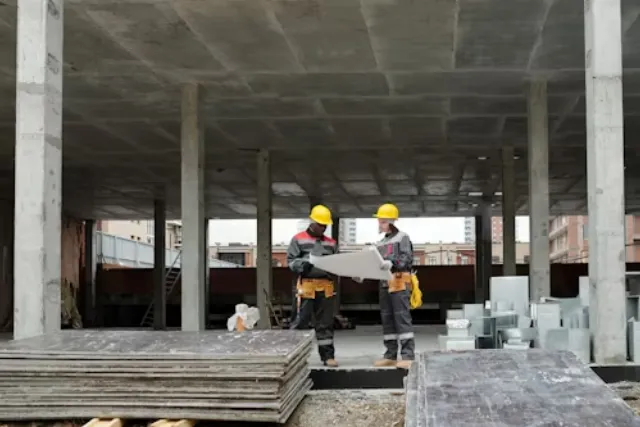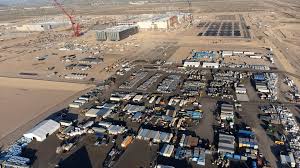
A surge of big-ticket projects in manufacturing and data centers gave the U.S. construction industry a strong jolt in June, even as concerns linger about how long the momentum will last.
According to Dodge Construction Network, total construction starts rose 16% last month to reach a seasonally adjusted annual rate of $1.33 trillion. The bounce marks a welcome lift after a sluggish spring, though developers and contractors continue to navigate a tricky mix of inflation, evolving trade policies, and stubbornly high interest rates.

Nonresidential building activity was the standout, climbing 39% for the month thanks to headline-grabbing manufacturing megaprojects and massive new data center builds. Infrastructure-related nonbuilding work such as highways and utilities ticked up by 2%, while the housing market softened again, with residential starts slipping 1%.
“Construction starts saw solid growth in June,” said Sarah Martin, associate director of forecasting at Dodge Construction Network. “However, risks remain elevated that construction starts will be more subdued in the back half of the year, alongside ongoing uncertainty over trade policy and the broader economy.”
One key source of unease is persistent cost pressure. Developers have become more hesitant to commit to new work as they watch how the Trump administration’s shifting trade rules and tariffs could add to material costs. Meanwhile, with borrowing costs still high and the timing of potential interest rate cuts unclear, financing conditions are tighter than many would like.
Despite these headwinds, June saw major commitments to some of the country’s most high-profile projects to date. Dodge highlighted the nine largest groundbreakings of the month:
The scale of these projects helped push nonresidential starts to an annualized rate of $635 billion — up 39% from May. Commercial construction was especially robust, soaring 78% month-over-month, while manufacturing starts alone spiked an eye-popping 304% driven by TSMC’s Arizona expansion. Institutional building, however, stayed relatively flat as a 26% bump in education construction was countered by a 20% drop in healthcare projects.

Year-to-date figures remain positive, with nonresidential building starts up 6% compared to the same stretch in 2024. Commercial and institutional segments are ahead by 9% and 3%, respectively.
Infrastructure work also provided a lift to nonbuilding starts, which inched up to a $330 billion annualized rate — a 2% monthly gain. Road and bridge projects saw a robust 32% jump in June, rebounding from a slower May, and environmental public works rose by the same margin. Utility projects, however, fell 29%, weighing on the overall total. So far this year, road and bridge starts are 8% ahead of last year’s pace, but utility starts are down 15%.
Meanwhile, the housing sector remains mixed. Residential starts edged down to a $366 billion annualized rate as single-family homebuilding fell 2% and multifamily starts stayed flat. Year-to-date, total residential starts are down 5% compared to 2024 — with single-family down 11% and multifamily up 8%.
With inflation and policy questions still unresolved, many in the industry remain braced for a bumpier ride in the coming months — even as large-scale investments show where owners and developers see long-term opportunities.
Originally reported by Sebastian Obando in Construction Dive.